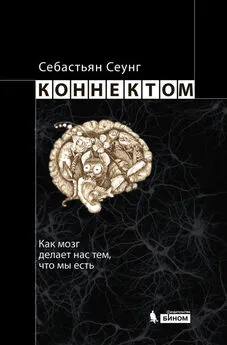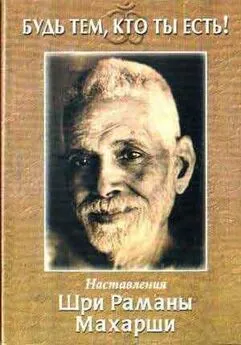Себастьян Сеунг - Коннектом. Как мозг делает нас тем, что мы есть
- Название:Коннектом. Как мозг делает нас тем, что мы есть
- Автор:
- Жанр:
- Издательство:Литагент «БИНОМ. Лаборатория знаний»a493f192-47a0-11e3-b656-0025905a06ea
- Год:2014
- Город:Москва
- ISBN:978-5-9963-2672-3
- Рейтинг:
- Избранное:Добавить в избранное
-
Отзывы:
-
Ваша оценка:
Себастьян Сеунг - Коннектом. Как мозг делает нас тем, что мы есть краткое содержание
Что такое человек? Какую роль в формировании личности играют гены, а какую – процессы, происходящие в нашем мозге? Сегодня ученые считают, что личность и интеллект определяются коннектомом, совокупностью связей между нейронами. Описание коннектома человека – невероятно сложная задача, ее решение станет не менее важным этапом в развитии науки, чем расшифровка генома, недаром в 2009 году Национальный институт здоровья США запустил специальный проект – «Коннектом человека», в котором сегодня участвуют уже ученые многих стран.
В своей книге Себастьян Сеунг, известный американский ученый, профессор компьютерной нейробиологии Массачусетского технологического института, рассказывает о самых последних результатах, полученных на пути изучения коннектома человека, и о том, зачем нам это все нужно.
Коннектом. Как мозг делает нас тем, что мы есть - читать онлайн бесплатно ознакомительный отрывок
Интервал:
Закладка:
14. Antonini, A., and M. P. Stryker. 1996. Plasticity of geniculo cortical afferents following brief or prolonged monocular occlusion in the cat. Journal of Comparative Neurology , 369 (1): 64–82.
15. Azevedo, F. A., L. R. Carvalho, L. T. Grinberg, J. M. Far fel, R. E. Ferretti, R. E. Leite, F. W. Jacob, R. Lent, and S. Her culano-Houzel. 2009. Equal numbers of neuronal and nonn euro nal cells make the human brain an isometrically scaled-up primate brain. Journal of Comparative Neurology , 513 (5): 532–541.
16. Bagwell, C. E. 2005. “Respectful image”: Revenge of the barber surgeon. Annals of Surgery , 241 (6): 872.
17. Bailey, A., A. Le Couteur, I. Gottesman, P. Bolton, E. Simonoff, E. Yuzda, and M. Rutter. 1995. Autism as a strongly genetic disorder: Evidence from a British twin study. Psychological Medicine , 25 (1): 63–77.
18. Bailey, P., and G. von Bonin. 1951. The isocortex of man. Urbana, Ill.: University of Illinois Press.
19. Bamman, M. M., B. R. Newcomer, D. E. Larson-Meyer, R. L. Wein sier, and G. R. Hunter. 2000. Evaluation of the strength-size relationship in vivo using various muscle size indices. Medicine and Science in Sports and Exercise , 32 (7): 1307.
20. Barlow, H. B. 1972. Single units and sensation: A neuron doctrine for perceptual psychology. Perception , 1 (4): 371–394.
21. Basser, L. S. 1962, Hemiplegia of early onset and the faculty of speech with special reference to the effects of hemispherectomy. Brain , 85: 427–460.
22. Baum, K. M., and E. F. Walker. 1995. Childhood behavioral precursors of adult symptom dimensions in schizophrenia. Schizophrenia Research , 16 (2): 111–120.
23. Bear, M. F., B. W. Connors, and M. Paradiso. 2007. Neuroscience: Exploring the brain , 3rd ed. Baltimore: Lippincott, Williams, and Wilkins.
24. Beard, M. 2008. The fires of Vesuvius: Pompeii lost and found. Cambridge, Mass.: Harvard University Press.
25. Bechtel, W. 2006. Discovering cell mechanisms: The creation of modern cell biology. Cambridge, Eng.: Cambridge University Press.
26. Benes, F. M., M. Turtle, Y. Khan, and P. Farol. 1994. Mye lination of a key relay zone in the hippocampal formation occurs in the human brain during childhood, adolescence, and adulthood. Archives of General Psychiatry , 51 (6): 477–484.
27. Bernal, B., and N. Altman. 2010. The connectivity of the superior longitudinal fasciculus: A tractography DTI study. Magnetic Resonance Imaging , 28 (2): 217–225.
28. Bertone, T., and G. De Carli. 2008. The last secret of Fatima. New York: Doubleday.
29. BGW. 2002. Graduate student in peril: A first person account of schizophrenia. Schizophrenia Bulletin , 28 (4): 745–755.
30. Bhardwaj, R. D., M. A. Curtis, K. L. Spalding, B. A. Buchholz, D. Fink, T. Björk-Eriksson, C. Nordborg, F. H. Gage, H. Druid, P. S. Eriksson, et al. 2006. Neocortical neurogenesis in humans is restricted to development. Proceedings of the National Acad emy of Sciences , 103 (33): 12564.
31. Bi, G., and M. Poo. 1998. Synaptic modifications in cultured hippocampal neurons: Dependence on spike timing, synaptic strength, and postsynaptic cell type. Journal of Neuroscience, 18 (24): 10464.
32. Blakeslee, Sandra. 2000. A decade of discovery yields a shock about the brain. New York Times, Jan. 4.
33. Boatman, D., J. Freeman, E. Vining, M. Pulsifer, D. Miglioretti, R. Minahan, B. Carson, J. Brandt, and G. McKhann. 1999. Language recovery after left hemispherectomy in children with late-onset seizures. Annals of Neurology , 46 (4): 579–586.
34. Bock, D. D., W. C. A. Lee, A. M. Kerlin, M. L. Andermann, G. Hood, A. W. Wetzel, S. Yurgenson, E. R. Soucy, H. S. Kim, and R. C. Reid. 2011. Network anatomy and in vivo physiology of visual cortical neurons. Nature , 471 (7337): 177–182.
35. Bock, O., and G. Kommerell. 1986. Visual localization after strabismus surgery is compatible with the “outflow” theory. Vision Research , 26 (11): 1825.
36. Bosch, F., and L. Rosich. 2008. The contributions of Paul Ehrlich to pharmacology: A tribute on the occasion of the centenary of his Nobel prize. Pharmacology , 82 (3): 171–179.
37. Bosl, W., A. Tierney, H. Tager-Flusberg, and C. Nelson. 2011. EEG complexity as a biomarker for autism spectrum disorder risk. BMC Medicine , 9: 18.
38. Bostrom, N. 2003. Are you living in a computer simulation? Philosophical Quarterly , 53 (211): 243–255.
39. Bouchard, T. J., Jr., D. T. Lykken, M. McGue, N. L. Segal, and A. Tellegen. 1990. Sources of human psychological differences: The Minnesota Study of Twins Reared Apart. Science , 250: 223–228.
40. Boyke, J., J. Driemeyer, C. Gaser, C. Buchel, and A. May. 2008. Training-induced brain structure changes in the elderly. Journal of Neuroscience , 28 (28): 7031.
41. Bradley, G. D. 1920. The story of the Pony Express , 4th ed. Chicago: McClurg.
42. Braitenberg, V., and A. Schüz. 1998. Cortex: Statistics and geometry of neuronal connectivity . Berlin: Springer.
43. Briggman, K. L., M. Helmstaedter, and W. Denk. 2011. Wiring specificity in the direction-selectivity circuit of the retina. Nature , 471 (7337): 183–188.
44. Brodmann, K. 1909. Vergleichende Lokalisationslehre der Groß hirnrinde in ihren Prinzipien dargestellt auf Grund des Zell enbaues. Leipzig: Barth. English trans. available as Garey, L. J. 2006. Brodmann’s localisation in the cerebral cortex: The principles of comparative localisation in the cerebral cortex based on cytoarchitectonics. New York: Springer.
45. Bruer, J. T. 1999. The myth of the first three years: A new understanding of early brain development and lifelong learning. New York: Free Press.
46. Brundin, P., J. Karlsson, M. Emgård, G. S. Kaminski Schierle, O. Hansson, Å. Petersén, and R. F. Castilho. 2000. Improving the survival of grafted dopaminergic neurons: A review over current approaches. Cell Transplantation , 9 (2): 179–196.
47. Bullock, T. H., M. V. L. Bennett, D. Johnston, R. Josephson, E. Marder, and R. D. Fields. 2005. The neuron doctrine, redux. Science , 310 (5749): 791.
48. Buonomano, D. V., and M. M. Merzenich. 1998. Cortical plasticity: From synapses to maps. Annual Review of Neuro science, 21 (1): 149–186.
49. Burrell, Brian. 2004. Postcards from the brain museum: The improbable search for meaning in the matter of famous minds. New York: Broadway Books.
50. Buss, R. R., W. Sun, and R. W. Oppenheim. 2006. Adaptive roles of programmed cell death during nervous system devel opment. Annual Review of Neuroscience , 29: 1.
51. Cardno, A. G., and I. I. Gottesman. 2000. Twin studies of schizophrenia: From bow-and-arrow concordances to star wars Mx and functional genomics. American Journal of Medical Genetics, C, Seminars in Medical Genetics , 97 (1): 12–17.
52. Carmichael, S. T. 2006. Cellular and molecular mechanisms of neural repair after stroke: Making waves. Annals of Neurology , 59 (5): 735–742.
53. Carper, R. A., P. Moses, Z. D. Tigue, and E. Courchesne. 2002. Cerebral lobes in autism: Early hyperplasia and abnormal age effects. Neuroimage , 16 (4): 1038–1051.
54. Catani, M., and D. H. Fftche. 2005. The rises and falls of disconnection syndromes. Brain , 128: 2224–2239.
55. Chadwick, J. 1960. The decipherment of Linear B . Cambridge, Eng.: Cambridge University Press.
56. Chalfie, M., J. E. Sulston, J. G. White, E. Southgate, J. N. Thom son, and S. Brenner. 1985. The neural circuit for touch sensitivity in Caenorhabditis elegans. Journal of Neuros cience , 5 (4): 956.
57. Changeux, Jean-Pierre. 1985. Neuronal man: The biology of mind. New York: Pantheon.
58. Chen, B. L., D. H. Hall, and D. B. Chklovskii. 2006. Wiring optimization can relate neuronal structure and function. Proceedings of the National Academy of Sciences , 103 (12): 4723.
59. Chklovskii, D. B., and A. A. Koulakov. 2004. Maps in the brain: What can we learn from them? Annual Review of Neuroscience , 27: 369–392.
60. Clarke, Arthur C. 1973. Profiles of the future: An inquiry into the limits of the possible , rev. ed. New York: Harper & Row.
61. CMS Collaboration. 2008. The CMS experiment at the CERN LHC. Journal of Instrumentation , 3: S08004.
62. Cohen, L. G., P. Celnik, A. Pascual-Leone, B. Corwell, L. Faiz, J. Dambrosia, M. Honda, N. Sadato, C. Gerloff, M. D. Catalá, et al. 1997. Functional relevance of cross-modal plasticity in blind humans. Nature , 389 (6647): 180–183.
63. Coleman, M. 2005. Axon degeneration mechanisms: Com mona lity amid diversity. Nature Reviews Neuroscience , 6 (11): 889–898.
64. Conel, J. L. 1939–1967. Postnatal development of the human ce rebral cortex . 8 vols. Cambridge, Mass.: Harvard University Press.
65. Conforti, L., R. Adalbert, and M. P. Coleman. 2007. Neuronal death: Where does the end begin? Trends in Neurosciences , 30 (4): 159–166.
66. Connors, B. W., and M. J. Gutnick. 1990. Intrinsic firing patterns of diverse neocortical neurons. Trends in Neuros cien ces , 13 (3): 99–104.
67. Corkin, S. 2002. What’s new with the amnesic patient HM? Nature Reviews Neuroscience , 3 (2): 153–160.
68. Courchesne, E., and K. Pierce. 2005. Why the frontal cort ex in autism might be talking only to itself: Local over-connectivity but long-distance disconnection. Current Opinion in Neurobiology , 15 (2): 225–230.
69. Courchesne, E., K. Pierce, C. M. Schumann, E. Redcay, J. A. Buckwalter, D. P. Kennedy, and J. Morgan. 2007. Mapp ing early brain development in autism. Neuron , 56 (2): 399–413.
70. Cowan, W. M., J. W. Fawcett, D. D. O’Leary, and B. B. Stanfield. 1984. Regressive events in neurogenesis. Science , 225 (4668): 1258.
71. Cramer, S. C. 2008. Repairing the human brain after stroke: I. Mechanisms of spontaneous recovery. Annals of Neurology , 63 (3): 272–287.
72. Davis, Kenneth C. 2005. Don’t know much about mythology: Everything you need to know about the greatest stories in human history but never learned. New York: HarperCollins.
73. Davis, N. Z. 1983. The Return of Martin Guerre . Cambridge, Mass.: Harvard University Press.
74. Davis, N. Z. 1988. On the lame. American Historical Review , 93 (3): 572–603.
75. DeFelipe, J. 2010. Cajal’s butterflies of the soul: Science and art. New York: Oxford University Press.
76. DeFelipe, J., and E. G. Jones. 1988. Cajal on the cerebral cortex . New York: Oxford University Press.
77. Denk, W., and H. Horstmann. 2004. Serial block-face scanning electron microscopy to reconstruct three-dimensional tissue nanostructure. PLoS Biology , 2 (11): e329.
78. Dennett, Daniel Clement. 1978. Brainstorms: Philosophical essays on mind and psychology. Montgomery, Vt.: Bradford Books.
79. Desimone, R., T. D. Albright, C. G. Gross, and C. Bruce. 1984. Stimulus-selective properties of inferior temporal neurons in the macaque. Journal of Neuroscience , 4 (8): 2051.
80. Devlin, K. 2010. The unfinished game: Pascal, Fermat, and the seventeenth-century letter that made the world modern. New York: Basic Books.
81. Dobell, C. C. 1960. Antony van Leeuwenhoek and his “little animals”. New York: Dover.
Читать дальшеИнтервал:
Закладка:


![Рейчел Херц - Почему мы едим то, что едим [Наука о том, как наш мозг диктует нам, что есть]](/books/1061252/rejchel-herc-pochemu-my-edim-to-chto-edim-nauka-o-t.webp)
![Алан Джасанов - Мозг: прошлое и будущее [Что делает нас теми, кто мы есть]](/books/1070785/alan-dzhasanov-mozg-proshloe-i-buduchee-chto-delaet.webp)






